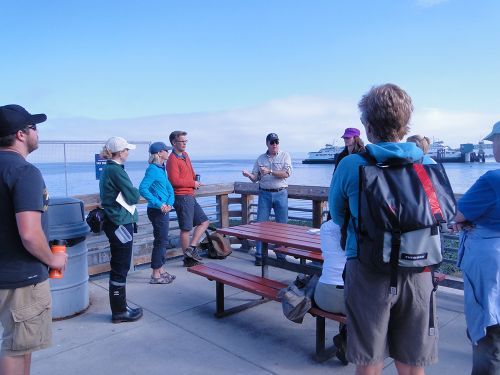Emergency Response Division
What We Do
Thousands of incidents occur each year in which oil or chemicals are released into the environment as a result of accidents or natural disasters. Spills into our coastal waters and inland waterways—whether accidental or intentional—can harm people, the environment and the economies on which we rely. Potential economic impacts of these incidents include substantial disruption of marine transportation, widespread fisheries closures, and lost opportunities for recreation or tourism.
OR&R’s Emergency Response Division (ERD) provides scientific expertise and coordination to support decision-making during a response to oil and hazardous substances pollution. Under the National Contingency Plan, NOAA is responsible for providing scientific support to the federal on-scene coordinator for oil and hazardous material spills. The division provides 24/7 response support to spill events, responding to approximately 175 incidents each year. ERD also supports preparedness activities for government agencies and industry, such as spill exercises, contingency planning, development of planning tools, and training.
Scientific Support for Emergency Response
When spills occur, NOAA Scientific Support Coordinators (SSCs) coordinate and provide critical scientific information to the federal on-scene coordinator. A multidisciplinary team of scientists—including oceanographers, modelers, biologists, chemists, and geologists—support the SSCs during spill events and for drills, exercises, and contingency planning. SSCs are strategically located around the country, often within U.S. Coast Guard (USCG) offices, to provide local services to a range of users in public and private sectors.
ERD facilitates spill prevention, preparedness, and response at national and local levels, providing expertise on issues such as dispersant use, response countermeasures, and alternative response technologies. While oil and chemical spills are the division’s major focus, ERD also provides support for incidents such as downed aircraft, search and rescue, and tracking floating objects. ERD's scope encompasses the entire U.S. coastline, including the Great Lakes, Alaska, Hawaii, and U.S. territories. The division’s expertise is frequently sought internationally, responding when requested through the National Response Team.
Preparing Response Communities
ERD develops tools, guidelines, and field-oriented job aids to assist preparedness for federal, state, and local spill response professionals. The division also provides standard techniques for observing oil, assessing shoreline impact, and evaluating and selecting cleanup technologies.
To help government and industry spill planners develop contingency plans, the division provides scientific expertise, modeling tools, and planning and response guidance through published guidelines and job aids. In addition, ERD supports the planning and execution of 30-40 government- and industry-led exercises per year for simulated oil and chemical spills and other disasters.

Training Spill Planners and Responders
Each year, the division, in coordination with OR&R’s Disaster Preparedness Program, trains approximately 1,000 individuals in industry and government on the scientific aspects of oil and chemical spill response. Training promotes more efficient planning and spill response, and it transfers scientific expertise and experience to the broadest possible audience.
 An official website of the United States government.
An official website of the United States government. 


